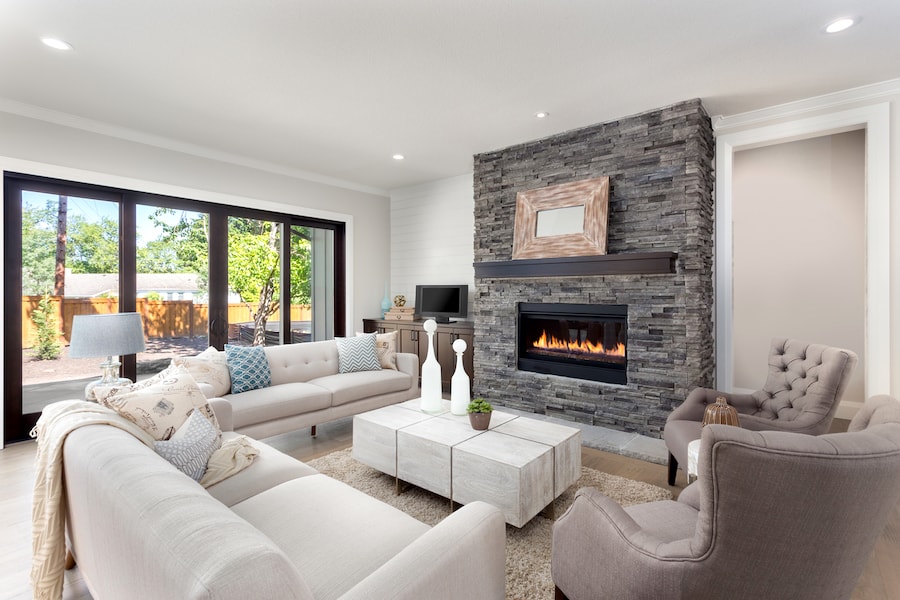
Homebuyers looking to buy a home in today’s market know that all-cash offers can often win the bidding war. For those buyers who have the cash, that’s great. What about everyone else? The CashBuys program is designed to give you a winning edge.
With the CashBuys program, you can compete for your dream home by offering an all-cash offer without having to pay cash upfront. How? Our CashBuys program helps qualified homebuyers get pre-approved as cash buyers. After the transaction closes, we immediately buy the property and you get a fixed-rate mortgage: fixed monthly payments, homeownership, and no surprises.
A cash offer with the CashBuys mortgage program removes the financing contingency, keeps escrow moving quickly, and leads to a fast close in just 15 days. Right now, mortgage rates are low enough to consider securing a mortgage even if you have enough liquid assets to make an all-cash offer. With the CashBuys program, you can secure a fixed-rate mortgage with favorable loan terms and still make an all-cash offer to win your perfect home.
Related: Find out how a local mortgage advisor can help you win your next offer
All-cash offers give homebuyers a competitive edge.
All-cash offers are often a strategic move when multiple offers are put forward on a new home. Paying cash will help your offer stand out and show the seller you’re serious.
Right from the start, the seller knows that you won’t need to secure financing. Financial contingencies are removed along with other common financial hurdles. In short, you won’t need additional approval in order for the sale to go through.
All-cash offers help new homebuyers exercise freedom and opportunity, especially in areas where the housing market is competitive.
How to Take Advantage of the CashBuys Mortgage
With a CashBuys home loan, you can make an all-cash offer on your dream home (yes, without paying cash). Then, as your mortgage partner, we buy the loan on your behalf and immediately sell it to you once the sale closes. This is a fantastic advantage in today’s market.
This unique CashBuys program allows you to operate as a cash buyer when negotiating with the seller. Then, after the transaction closes, you’ll have a regular fixed mortgage with favorable loan terms. No surprises. No risk.
- You can make an ALL-CASH OFFER on your dream home
- Make an offer without contingencies (only the home inspection is required)
- Close in 15 days (later if you and the seller would like a later date)
- After the close, enjoy a fixed-rate mortgage with steady mortgage payments
- Only a 10% down payment required
Related: How to FAST TRACK your mortgage pre-approval
Eligibility for the CashBuys Home Loan Program
Borrower criteria are more strict for the CashBuys program, but the benefits are worth pursuing.
Qualified borrowers will typically meet the following requirements:
- Conventional home loans only (up to $650k)
- Primary residence required
- A minimum credit score of 700+
- Verified assets and cash reserves
- 3% Earnest money down
- 10% Minimum down payment
- 1.5% Processing fee (+ $995 underwriting fee)
- Conventional Home Loans only (up to $650k)
- Verifiable income and employment
Tips to Maximize Verified Income and Assets
Most of us can’t flip a switch to increase our income. However, you’ll qualify for the best home loan when you can verify additional income. Employment is only one aspect of qualified income.
Consider the following revenue streams and be sure to include them if they apply to you:
- investment gains, interest, and dividends
- restricted stock units (RSU)
- employee stock purchase plans (ESPP shares)
- rental property income
- business income
- spousal support and/or child support
Related: Learn the truth about closing costs and zero-cost loans
3 Steps to Apply for the CashBuys Program
Step 1: Connect with a local mortgage advisor.
Touch base with a local mortgage advisor as soon as you start shopping for your dream home. Making an all-cash offer with the CashBuys mortgage program will give a competitive edge and a fast close. A local mortgage advisor will understand the challenges of the housing market in your area and can get your application approved quickly.
Find a qualified mortgage expert in your local area.
Step 2: Gather required documentation and apply early.
The CashBuys mortgage program requires standard documentation like most other home loans. But it’s important to start the process early to make sure everything is approved, so you’re ready to make an all-cash offer when you find your perfect home.
Ask your local mortgage advisor for a quick list to help keep things on track. An experienced mortgage advisor will do the extra work to verify your income and put the documentation in order to help get you approved quickly for the CashBuys home loan.
Here’s the documentation you may need:
- Identification such as a passport or driver’s license
- Employment verification
- Proof of income (e.g., pay stubs, W-2 statements, bonuses, alimony)
- RSU, ESPP shares, or other stock options
- Tax returns for the past two years
- Recent bank statements
- Investment account statements
Step 3: Make All-Cash Offers
Shop with confidence, knowing that you’ll stand out as a buyer—no worrying about whether or not your financing will get approved. What’s more, you’ll get the added tax benefits of a regular mortgage after the close. Mortgage interest and property taxes are tax-deductible in most states across the country. Check with your tax accountant to verify the tax laws in your state and confirm your savings.
Enjoy a 15-day close, a fixed monthly mortgage payment and the keys to your dream home.
Summary
Years ago, homeowners dreamed about paying off their mortgage and living debt-free. But using a mortgage to borrow money at a low rate can be a fast path to financial freedom. The CashBuys mortgage can help you shop as a cash buyer, then leverage low-interest rates to secure a fixed-rate mortgage. What’s more, there are financial and tax advantages to having a mortgage on your principal residence.
Taking Action
If you’re considering making an all-cash offer on a new home, now is the time to take action. Our CashBuys program can give you the competitive edge of a cash offer and a low-interest home loan with favorable terms for qualified buyers. Connect with a mortgage advisor to discuss your goals. The CashBuys mortgage program can help you build wealth and establish financial stability. We’d love to help.








